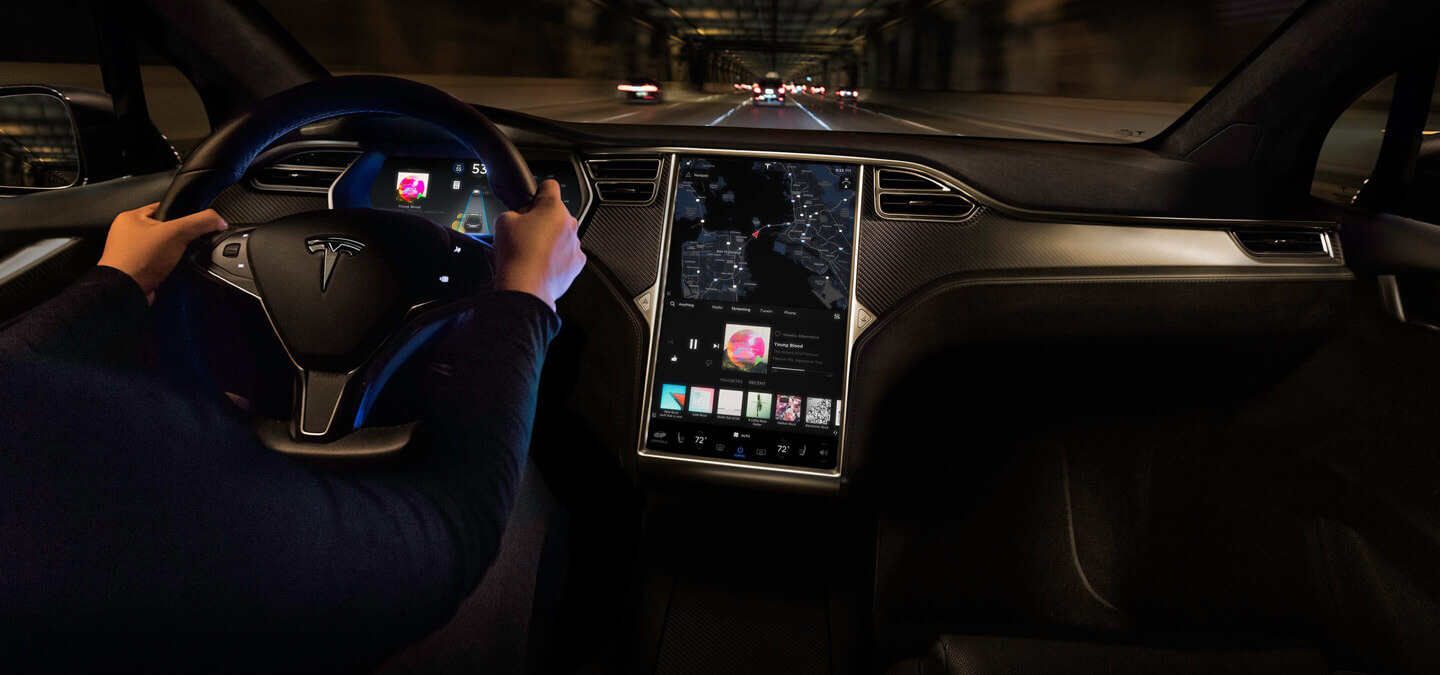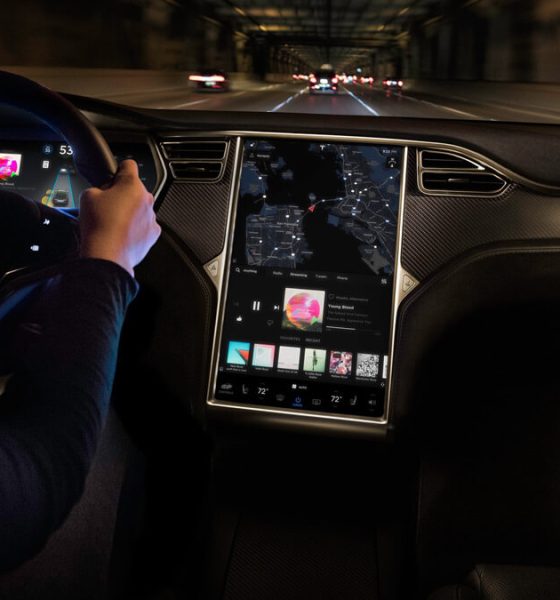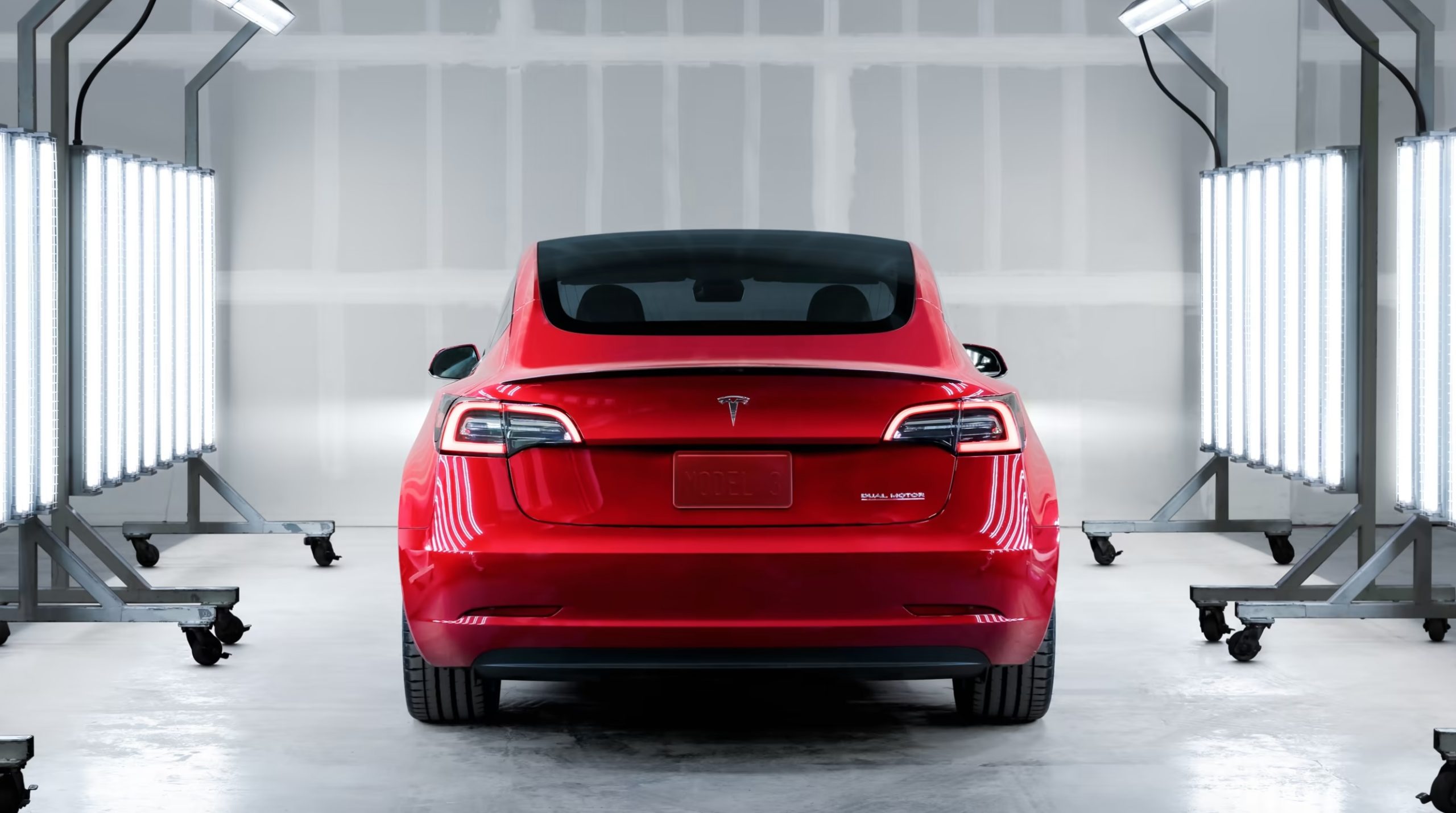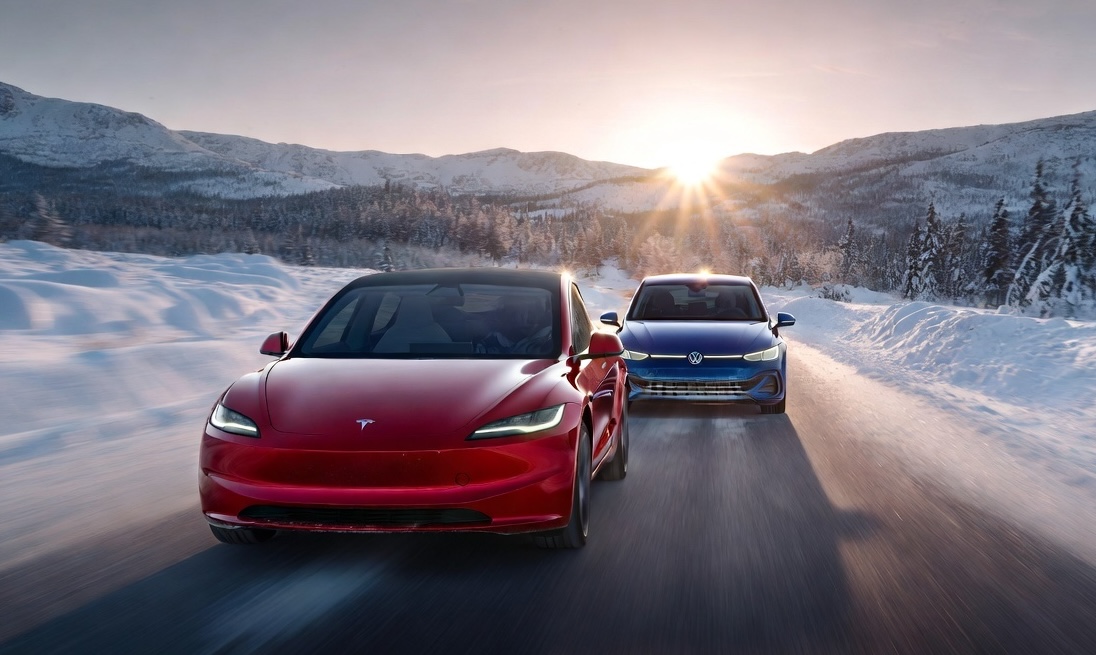

News
Tesla's Elon Musk shares MCU1 retrofit target timeframe, estimates $2k upgrade cost
Elon Musk has provided new details about Tesla’s Media Control Unit (MCU) retrofits for vehicles that are equipped with older infotainment systems. According to the CEO, MCU1 to MCU2 retrofits may start in a few months, though he does not personally recommend it, especially considering its estimated $2,000 cost. Musk has instead suggested that Tesla will release an update to older cars that can optimize the performance of their existing MCUs.
Musk’s recent statements were shared on Twitter while the CEO was interacting with Tesla owners, some of whom owned MCU1-equipped vehicles. The limitations of the older hardware have become more prominent over time, particularly as Tesla rolled out media-heavy features such as the Tesla Theater and the Tesla Arcade. Similar to older hardware in mobile devices, MCU1 vehicles have become slower compared to the company’s newer vehicles like the Raven Model S and X, as well as the Model 3.
Elon Musk has previously stated that MCU1 retrofits would be offered to owners whose vehicles are still equipped with older hardware. The CEO confirmed this following the initial rollout of MCU2 vehicles, and the idea was reiterated after the release of the company’s new Tesla Arcade titles. That being said, a number of Tesla owners have been informed by local service centers that an MCU1 to MCU2 retrofit was not possible.
For the uninitiated, Tesla’s MCU1 is equipped with an Nvidia Tegra 3 processor, which is capable but a tad slower than its newer sibling. Meanwhile, the MCU2 runs on an Intel Atom E800 series chip and comes with a faster browser. The unit also renders videos with sound, giving it the capability of running new features such as the Tesla Theater, which includes video streaming apps such as Netflix and YouTube, as well as video games in Tesla Arcade. All Tesla Model 3s run on MCU 2, as well as Model S and Model X units purchased after March 2018. Customers who bought their Model S and X prior to March 2018 use the MCU1.
Many Tesla owners whose vehicles are equipped with MCU1 have been clamoring for an update to avail of features only enjoyed by those using the newer system. Tesla has not left those on MCU1 in the dark and has rolled out several updates to improve the performance of the older infotainment systems. That being said, the gap between the actual capabilities of Tesla’s MCU1 hardware and its MCU2 features such are growing, and it has pretty much reached the point where the infotainment systems of older vehicles are significantly slower than those in newer cars.
In a way, Elon Musk’s recent statements hint that Tesla’s current priority is the rollout of its Hardware 3, which is essential for its Full Self-Driving initiatives. Retrofits for HW2.5 vehicles have already begun, and HW2 vehicles are expected to follow soon. HW3 is Tesla’s custom-designed computer that replaces the old Nvidia computer used for HW 2.5. As noted by Tesla during its Autonomy Day presentation, Hardware 3 was specifically built to achieve true Full Self-Driving capabilities and can enhance the electric car’s processing capability by as much as 1,000 percent.
Nevertheless, it would be wise for Tesla to start rolling out its MCU1 retrofits for older vehicles, even if it’s later than expected. Considering that Tesla owners have shown a willingness to pay for the retrofit, and the CEO himself has confirmed that the upgrade is possible, it is in both Tesla and its customers’ best interest to make sure the vast majority of its fleet are able to enjoy the best that the company has to offer — even if it’s just for infotainment purposes.

Elon Musk
SpaceX maintains unbelievable Starship target despite Booster 18 incident
It appears that it will take more than an anomaly to stop SpaceX’s march towards Starship V3’s refinement.

SpaceX recently shared an incredibly ambitious and bold update about Starship V3’s 12th test flight.
Despite the anomaly that damaged Booster 18, SpaceX maintained that it was still following its plans for the upgraded spacecraft and booster for the coming months. Needless to say, it appears that it will take more than an anomaly to stop SpaceX’s march towards Starship V3’s refinement.
Starship V3 is still on a rapid development path
SpaceX’s update was posted through the private space company’s official account on social media platform X. As per the company, “the Starbase team plans to have the next Super Heavy booster stacked in December, which puts it on pace with the test schedule planned for the first Starship V3 vehicle and associated ground systems.”
SpaceX then announced that Starship V3’s maiden flight is still expected to happen early next year. “Starship’s twelfth flight test remains targeted for the first quarter of 2026,” the company wrote in its post on X.
Elon Musk mentioned a similar timeline on X earlier this year. In the lead up to Starshp Flight 11, which proved flawless, Musk stated that “Starship V3 is a massive upgrade from the current V2 and should be through production and testing by end of year, with heavy flight activity next year.” Musk has also mentioned that Starship V3 should be good enough to use for initial Mars missions.
Booster 18 failure not slowing Starship V3’s schedule
SpaceX’s bold update came after Booster 18 experienced a major anomaly during gas system pressure testing at SpaceX’s Massey facility in Starbase, Texas. SpaceX confirmed in a post on X that no propellant was loaded, no engines were installed, and personnel were positioned at a safe distance when the booster’s lower section crumpled, resulting in no injuries.
Still, livestream footage showed significant damage around the liquid oxygen tank area of Booster 18, leading observers to speculate that the booster was a total loss. Booster 18 was among the earliest vehicles in the Starship V3 series, making the failure notable. Despite the setback, Starship V3’s development plans appear unchanged, with SpaceX pushing ahead of its Q1 2026 test flight target.
News
Tesla Sweden faces fresh union blockade at key Gothenburg paint shop
Allround Lack works with painting and damage repair of passenger cars, including Teslas.

Tesla’s ongoing labor conflict in Sweden escalated again as the trade union IF Metall issued a new blockade halting all Tesla paintwork at Allround Lack in Gothenburg.
Allround Lack works with painting and damage repair of passenger cars, including Teslas. It currently employs about 20 employees.
Yet another blockade against Tesla Sweden
IF Metall’s latest notice ordered a full work stoppage for all Tesla-related activity at Allround Lack. With the blockade in place, paint jobs on Tesla-owned vehicles, factory-warranty repairs, and transport-damage fixes, will be effectively frozen, as noted in a report from Dagens Arbete. While Allround Lack is a small paint shop, its work with Tesla means that the blockade would add challenges to the company’s operations in Sweden, at least to some degree.
Paint shop blockades have been a recurring tool in the longstanding conflict. The first appeared in late 2023, when repair shops were barred from servicing Tesla vehicles. Days later, the Painters’ Union implemented a nationwide halt on Tesla paint work across more than 100 shops. Since then, a steady stream of workshops has been pulled into the conflict.
Earlier blockades faced backlash from consumers
The sweeping effects of the early blockades drew criticism from industry groups and consumers. Employers and industry organization Transportföretagen stated that the strikes harmed numerous workshops across Sweden, with about 10 of its members losing about 50% of their revenue.
Private owners also expressed their objections. Tibor Blomhäll, chairman of Tesla Club Sweden, told DA in a previous statement that the blockades from IF Metall gave the impression that the union was specifically attacking consumers. “If I get parking damage to my car, I pay for the paint myself. The company Tesla is not involved in that deal at all. So many people felt singled out, almost stigmatized. What have I done as a private individual to get a union against me?” Blomhäll stated.
In response to these complaints, IF Metall introduced exemptions, allowing severely damaged vehicles to be repaired. The union later reopened access for private owners at workshops with collective agreements. The blockades at the workshops were also reformulated to only apply to work that is “ordered by Tesla on Tesla’s own cars, as well as work covered by factory warranties and transport damage on Tesla cars.”
News
Tesla breaks Norway’s all-time annual sales record with one month to spare
With November alone delivering 4,260 new registrations, Tesla has cemented its most dominant year ever in one of Europe’s most mature EV markets.

Tesla shattered Norway’s decade-old annual sales record this month, overtaking Volkswagen’s long-standing milestone with over one month still left in the year. Backed by surging demand ahead of Norway’s upcoming VAT changes, Tesla has already registered 26,666 vehicles year-to-date, surpassing Volkswagen’s 2016 record of 26,572 units.
With November alone delivering 4,260 new registrations month-to-date, Tesla has cemented its most dominant year ever in one of Europe’s most mature EV markets.
Model Y drives historic surge in Norway
Tesla’s impressive momentum has been led overwhelmingly by the Model Y, which accounted for 21,517 of Norway’s registrations this year, as noted in a CarUp report, citing data from Elbil Statistik. The Model 3 followed with 5,087 units, while the Model S and Model X contributed 30 and 19 vehicles, respectively. Even the parallel-imported Cybertruck made the charts with 13 registrations.
Demand intensified sharply through autumn as Norwegian buyers rushed to secure deliveries before the country’s VAT changes take effect in January. The new regulation is expected to add roughly NOK 50,000 to the price of a Model Y, prompting a wave of early purchases that helped lift Tesla beyond the previous all-time record well before year-end.
With December still ahead, Tesla is positioned to extend its historic lead further. Needless to say, it appears that Norway will prove to be one of Tesla’s strongest markets in Europe.
FSD could be a notable demand driver in 2026
What’s especially interesting about Tesla’s feat in Norway is that the company’s biggest selling point today, Full Self-Driving (Supervised), is not yet available there. Tesla, however, recently noted in a post on X that the Dutch regulator RDW has reportedly committed to issuing a Netherlands national approval for FSD (Supervised) in February 2026.
The RDW posted a response to Tesla’s post, clarifying the February 2026 target but stating that FSD’s approval is not assured yet. “The RDW has drawn up a schedule with Tesla in which Tesla is expected to be able to demonstrate that FSD Supervised meets the requirements in February 2026. RDW and Tesla know what efforts need to be made to make a decision on this in February. Whether the schedule will be met remains to be seen in the coming period,” the RDW wrote in a post on its official wesbite.
If FSD (Supervised) does get approved next year, Tesla’s vehicles could gain a notable advantage over competitors, as they would be the only vehicles on the market capable of driving themselves on both inner-city streets and highways with practically no driver input.








